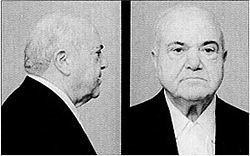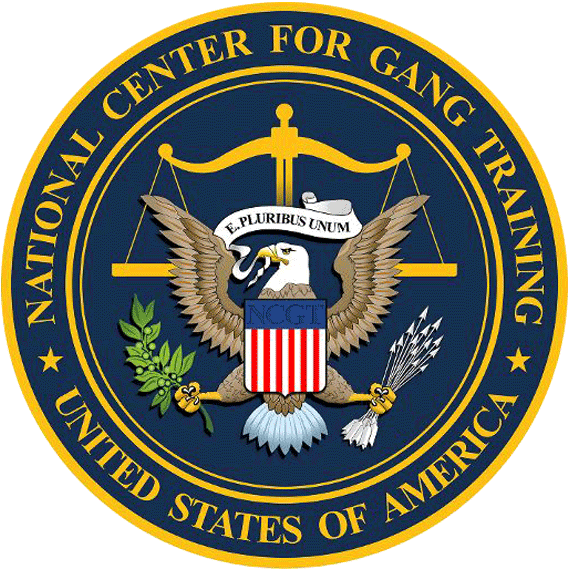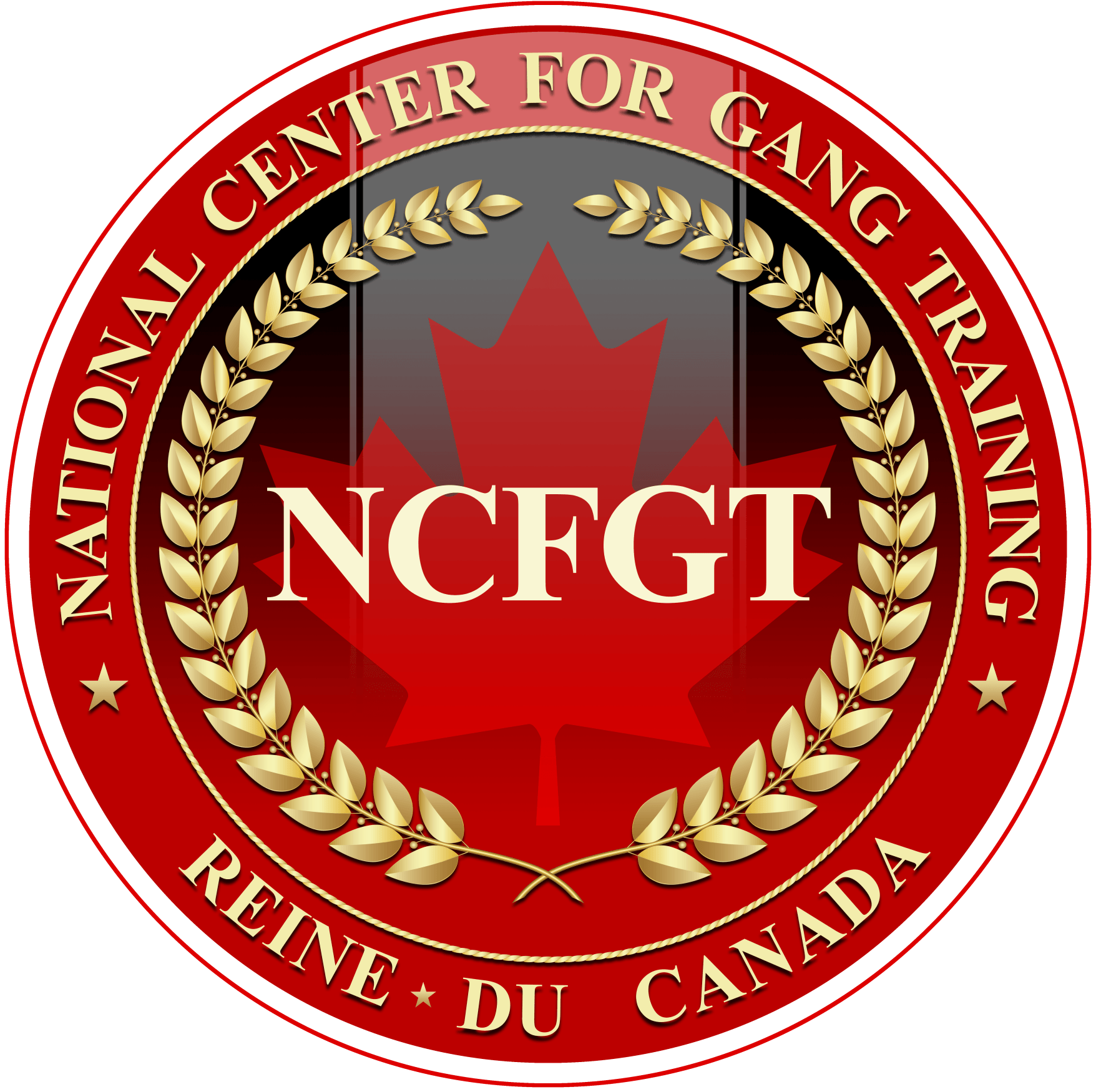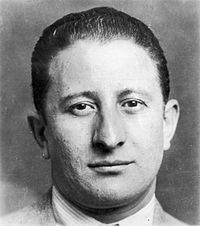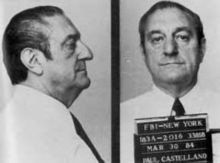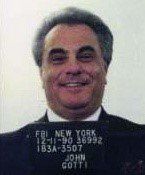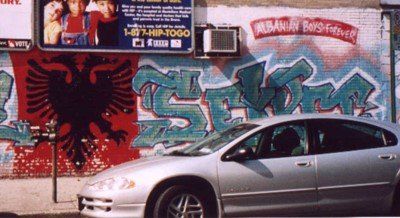Gambino crime family
Gambino crime family
The Gambino crime family is one of the "Five Families" that dominates organized crime activities in New York City, United States, within the nationwide criminal phenomenon known as the Mafia (or Cosa Nostra). The group is named after Carlo Gambino, boss of the family at the time of the McClellan hearings in 1963 when the structure of organized crime first gained public attention. The group's operations extend from New York and the eastern seaboard to California. Its illicit activities include labor and construction racketeering, gambling, loansharking, extortion, money laundering, prostitution, dumping violations, construction, building and cement violations, fraud and wire fraud, hijacking, pier thefts, and fencing.
The rise of what for a time was the most powerful crime family in America began in 1957, the day Albert Anastasia was assassinated while sitting in a barber chair at the Park-Sheraton Hotel in Manhattan. Experts believe Carlo Gambino helped orchestrate the hit to take over the family. Gambino partnered with Meyer Lansky to control gambling interests in Cuba. The family’s fortunes grew through 1976, when Gambino appointed his brother-in-law, Paul Castellano, as boss. Castellano infuriated upstart capo John Gotti, who orchestrated Castellano's murder in 1985. Gotti's downfall came in 1992, when his underboss Sammy Gravano decided to cooperate with the FBI. Gravano's cooperation brought down Gotti, along with most of the top members of the Gambino family. The family is now run by Domenico Cefalu.
History
Origins
The origins of the Gambino crime family can be traced back to the emergence of Italian Mafioso Salvatore "Toto" D'Aquila upon the New York Mafia scene around 1906, which is when D'Aquila's name first appears on police records for running a confidence scam, a racket that requires a great deal of intelligence and patience. D'Aquila had immigrated to the United States as an influential Palermitano Mafioso, and quickly used his ties to other Mafia leaders across the country to create a network of connections and to gain influence within the Italian-American underworld. By 1910 D'Aquila had become the leader of his own New York–based Sicilian Mafia group, one of four that emerged by the mid 1900s.
These four crime families included D'Aquila's own crime family based in East Harlem, Manhattan, which was also the base of the "first family", the Morello crime family. The Morello family was originally led by Giuseppe Morello and his half-brothers, Vincent, Ciro and Nick Terranova, and then by Joe Masseria, who became D'Aquila's biggest rival in New York. Two Brooklyn-based crime families emerged: one was the Castellammarese clan, led by Nicola "Cola" Schiro from Roccamena, Sicily (not from Castellammare del Golfo, Sicily, where the majority of his Brooklyn crime family members came from), and second was a group led by Alfred Mineo based in Brooklyn. Eventually, two more Mafia groups emerged in New York City during Prohibition: This was a break-away faction from the Morello crime family based in the Bronx and led by Gaetano Reina, who was once aligned with boss Ciro "The Artichoke King" Terranova, and the last group formed in the late 1920s based in Brooklyn and led by Joe Profaci. Profaci became boss of one of the Five Families of New York that soon emerged once power in New York's Italian underworld was consolidated and the factions re-structured into the crime families that ruled organized crime in the city and across the country for the next eight decades.
By the mid 1910s D'Aquila had become the most influential Mafia boss in New York, in part because former New York Mafia "boss of bosses", Giuseppe Morello and his brother-in-law and second-in-command, Ignazio Saietta, had been imprisoned for 30 years in 1909 for counterfeiting. D'Aquila continued to amass power and influence within New York's Sicilian underworld and across the nation as his crime family grew in numbers and territory.
The expansion of the D'Aquila crime family was aided by the decimation of the Brooklyn Camorra led by Neapolitan Mafia boss, Don Pellegrino Morano, when Morano and his second-in-command, Alessandro Vollero were imprisoned for life in 1917, following a war with the Morello crime family, which led to the murder of boss Nick Morello (born Terranova) in 1916, for which Morano and Vollero were convicted.
By the beginning of Prohibition, the remaining Neapolitan Mafia members and the territory once under control of bosses Morano and Vollero were absorbed into the D'Aquila crime family. Soon after the Brooklyn-based Mineo group was also absorbed into Toto D'Aquila's crime family, making it the largest and most influential in New York City. The only remaining rival that D'Aquila needed to fear was the expanding forces and growing influence of boss Giuseppe "Joe the Boss" Masseria. Masseria had taken over the Morello crime family interests and territory by 1920, and quickly began to amass a great deal of power and influence, enough to rival D'Aquila by the mid 1920s.
By the late 1920s D'Aquila and Masseria were headed for a showdown and inevitable war, but Masseria struck first and D'Aquila was killed on October 10, 1928 by Masseria family gunmen. The crime family D'Aquila had led passed into the hands of his second-in-command or underboss, Alfred Mineo and his top lieutenant Steve Ferrigno, who at the height of the Prohibition era commanded the largest and most influential Sicilian crime family in New York City.
The Castellammarese War, between rival New York bosses Joe Masseria and Salvatore Maranzano claimed many victims, including Mineo and Ferrigno who were ambushed and killed on November 5, 1930, outside Ferrigno's home at 759 Pelham Parkway South. It was the latest in a long line of killings on both sides of the war, which ultimately ended with the deaths of both principals - Masseria in April 1931 and Maranzano five months later. The main beneficiary (and organizer of both hits) was Charlie "Lucky" Luciano, who rearranged New York's organized crime and established the basis of the "Five Families" of New York, which became known as the Commission of the Cosa Nostra.
After the Castellammarese War
Following a brief period under the control of Frank Scalice, the first recognized leader of what became the Gambino family was Vincent Mangano, an older mafioso who was still very much steeped in the Old World traditions of "honor," "tradition," "respect" and "dignity." However, he was somewhat more forward-looking than Masseria and Maranzano. He branched out into activities including extortion, union racketeering, and illegal gambling operations including horse betting, running numbers and lotteries.
Mangano also established the City Democratic Club, ostensibly to promote bedrock American values but in reality as a cover for Murder, Inc., the notorious band of mainly Jewish hitmen who did the bidding of the Italian-American run families, for a price. The operating head of the troupe was Mangano family underboss Albert Anastasia, known as the "Lord High Executioner". Vince's brother Phil Mangano was also a prominent member.
He also had close ties with Emil Camarda, a vice-president of the International Longshoremen's Association. Through the association, Mangano and the family controlled the Manhattan and Brooklyn waterfront with a mailed fist. From 1932 onward, the president of Local 1814 of the ILA was Anthony "Tough Tony" Anastasio, Albert Anastasia's younger brother (Anthony kept the original spelling of their last name). He was one of the family's biggest earners, steering millions of dollars in kickbacks and payoffs to the Mangano coffers. Tough Tony made no secret of his ties to the mob; he only had to say "my brother Albert" to get his point across.
Around this time, Carlo Gambino was promoted within the organization, as was another future boss of the family, Gambino's cousin Paul Castellano.
Mangano brothers murdered
Anastasia and Mangano never entirely saw eye to eye, even though they worked together for 20 years. Mangano wasn't pleased that Anastasia preferred the company of other gangsters rather than those in his own family. He also resented how the other families used Anastasia's services without his permission. On numerous occasions the two almost came to blows. This was only going to end badly for Mangano, and in April 1951, Phil Mangano was discovered murdered, while his brother disappeared without a trace. Although it has never been proven, it is generally believed that both were murdered by Anastasia.
Called to answer for the crimes of which he was suspected by the other New York bosses, Anastasia never admitted to his involvement in the deaths of the Manganos, but did claim that Vince had been planning to have him killed. He was already running the family in Mangano's "absence," and few in the organization found themselves inclined to depose one of the most feared killers of the age. With the support of Frank Costello, boss of the Luciano crime family, Anastasia was formally acclaimed boss of the renamed Anastasia family. Carlo Gambino, a wily character with designs on the leadership himself, maneuvered himself into position as underboss.
Anastasia eliminated
For most of the 1950s, the Luciano and Anastasia families' fortunes were closely linked and provided solidarity in the National Crime Syndicate for the two bosses. This particularly helped Costello, as Vito Genovese was angling to replace him, but knew he couldn't make a move as long as Anastasia was in the picture.
Genovese thus jumped on the 1952 killing of a Brooklyn man named Arnold Schuster, who Anastasia had killed for the most minor of indiscretions (acting as a prosecution witness against a bank robber Anastasia didn't even know), as evidence that Anastasia was unbalanced and generated too much heat for the syndicate. With Gambino secretly siding with Genovese against his own boss, the wheels were in motion for the removal of Anastasia.
On October 25, 1957, Anastasia was murdered while sitting in a barber's chair at the Park Sheraton Hotel on West 56th Street. For many years, the murder was believed to have been committed by Joseph "Crazy Joe" Gallo. Later, Colombo crime family boss and Gallo foe, Carmine "Junior" Persico claimed credit. Modern historians believe that Carlo Gambino ordered caporegime Joseph "Joe the Blonde" Biondo to kill Anastasia and Biondo gave the contract to soldier Stephen Armone. On the morning of October 25, 1957 Armone, along with Arnold Wittenburg and Stephen Grammauta, murdered Anastasia in the barbershop of the Park Sheraton Hotel. As Anastasia sat in the barber chair the three assailants rushed in, shoved the barber out of the way, and started shooting. The wounded Anastasia allegedly lunged at his killers, but only hit their reflections in the wall mirror. Anastasia died at the scene. Anastasia's underboss Carlo Gambino took the reins of the family, which from then on bore his name. Biondo was rewarded with the underboss position, which he kept until being demoted in 1965. Stephen Grammauta eventually became a caporegime in the 1990s. Six months earlier, Costello had been driven into retirement by an attempt on his life, clearing the way for Genovese.
Gambino promotes the family
By all accounts, Genovese was angling to become Boss of all Bosses, and believed that Gambino would support him. Gambino, however, had his own mind. He secretly joined forces with Luciano and Costello to get Genovese out of the way as well. Gambino helped trick Genovese into a lucrative drug deal, then paid a small-time Puerto Rican dealer to testify against him. Genovese was sent to prison in late 1957, and died there in 1969.
Gambino quickly built the family into the most powerful crime family in the United States, with close ties to Meyer Lansky's offshore gaming houses in Cuba and the Bahamas, a lucrative business for the Mafia. The failure of Joseph "Joe Bananas" Bonanno, the head of the Bonanno crime family and Gambino's top rival, to kill off Gambino and the heads of other New York crime families in the aftermath of the Bonanno War, saw Gambino become the most powerful leader of the "Five Families".
Gambino allegedly stretched his power as far as to organize the shooting of Joseph Colombo, head of the Colombo crime family, on June 28, 1971. Colombo survived the shooting but remained in a coma until his death in 1978. He was buried next to Joseph Gallo.
In either case, Gambino's influence stretched into behind-the-scenes control of the Lucchese crime family, led by Carmine "Mr. Gribbs" Tramunti. Gambino also allegedly influenced the selection of Frank "Funzi" Tieri as front boss of the Genovese crime family, after the murder of Thomas Eboli, whom Gambino, allegedly, had had killed over money owed. It is also more likely believed Eboli was killed by own crime family for his erratic ways.
Under Gambino, the family gained particularly strong influence in the construction industry. It acquired behind-the-scenes control of Teamsters Local 282, which controlled access to most building materials in the New York area and could literally bring most construction jobs in New York City to a halt.
On October 15, 1976, Gambino died of a heart attack, and control of the family passed not to the obvious choice, longtime underboss Aniello "Mr. Neil" Dellacroce, but to Paul Castellano, whose sister was married to Gambino. Allies of Dellacroce were thoroughly unhappy about that move, but Dellacroce himself kept his men in line, and was kept on as Castellano's Underboss.
The FBI closes in on Castellano
The Dellacroce faction remained displeased, believing that Castellano had inherited the role rather than earning it. They were also annoyed that Castellano saw himself more as a businessman than a crime boss, even though he expanded the family's influence in the construction industry. For all intents and purposes, the Gambinos held veto power over all construction projects worth over $2 million in New York City.
Castellano did retain a degree of muscle to keep Dellacroce's allies in check, including the notorious crew run by Anthony "Nino" Gaggi and Roy DeMeo, which was believed to have committed over 200 murders during Castellano's regime from the late 1970s and mid 1980s. While Castellano was still in charge, most of the family affairs were run and controlled unofficially by a four-man ruling panel which included powerful Garment District leader Thomas "Tommy" Gambino, bodyguard and later Underboss Thomas "Tommy" Bilotti, and powerful Queens faction-leaders Daniel "Danny" Marino and James "Jimmy Brown" Failla, all top rivals of John Gotti.
It was not a time for the family to be embroiled in inner turmoil and argument, as the Federal Bureau of Investigation had targeted the Gambino family as the easiest of the five families to infiltrate – FBI tapes obtained from a bug planted in a lamp on Castellano's kitchen table caught him discussing illegal deals with his subordinates, and by the early 1980s Castellano was up on a number of charges and faced with conviction. He let it be known that he wanted Carlo Gambino's son Thomas to take over the family should he be sent to jail, with Thomas Bilotti (Castellano's chauffeur and bodyguard) as his underboss, which further enraged the Dellacroce faction, particularly John Gotti.
In 1983, a federal indictment charged 13 members of the Gambino family with drug trafficking. This group included John Gotti's brother, Gene, and his best friend, Angelo "Quack Quack" Ruggiero, who got his nickname for his non-stop talking. The feds had in fact been listening in on his home phone conversations since 1980 – they had Ruggiero on tape discussing family business, making drug deals, and expressing contempt for Castellano. If Castellano knew they were dealing drugs, in violation of his no-drug policy, Ruggiero would be killed. By law, the accused were allowed transcripts of wiretap conversations to aid their defense, and Castellano demanded to be shown them, though Dellacroce did his best to put him off.
Dellacroce was by this time suffering from cancer, but with Ruggiero desperate for help, his friend John Gotti stood up for him. All the same, Castellano maintained that he wanted the transcripts, or he would have Ruggiero and Gotti removed. Gotti realized he had to act fast, and the death of his mentor Dellacroce on December 2, 1985, paved the way for him to take out Castellano.
John Gotti takes over
Gennaro "Jerry Lang" Langella
Following the high-profile media exposure of Joseph Colombo and the murderous excesses of Joe Gallo, the Colombo family entered a period of comparative calm and stability. With Colombo in a coma, the family leadership went to Thomas DiBella, a man adept at evading the authorities since his sole bootlegging conviction in 1932. However, DiBella was unable to prevent the Gambino family from chipping away at Colombo rackets, and the Colombos declined in power. Poor health forced DiBella to retire in 1977, and Colombo died in 1978. The Colombo family was facing another power vacuum.
During the 1970s, Carmine Persico had grown in stature within the family and was considered to be the clear successor as boss. However, Persico had spent much of this time in prison, and it was unclear if he could effectively rule the family from prison. Nevertheless, Persico took control, designating Gennaro "Jerry Lang" Langella as his street boss. In 1986, both men were convicted on massive Racketeer Influenced and Corrupt Organizations Act (RICO) charges and were sentenced to 100 years. In 1988, Persico named Victor Orena as the new acting boss.
Third Colombo war
Orena, an ambitious capo from Cedarhurst was not content with being acting boss to Persico. In 1990, using his strong ties to Gambino boss John Gotti, Orena petitioned the Mafia Commission to declare him the official boss of the Colombo family. Unwilling to cause more conflict, the Commission refused. On June 21, 1991, an enraged Persico sent gunmen under the leadership of Carmine Sessa to murder Orena at his house. However, Orena managed to escape before the gunmen could strike. The third Colombo war had begun.
While both sides appealed to the Commission for help, the war continued. On November 1991, Gregory Scarpa Sr., a Persico loyalist, was driving his daughter and granddaughter home when several Orena gunmen ambushed them. Scarpa and his relatives managed to escape. The war continued until 1992, when law enforcement imprisoned Orena and most of his loyalists.
Twelve people, including three innocent bystanders, died in this gang war. More than 80 made members and associates from both sides of the Colombo family were convicted, jailed or indicted. These included Persico's brother Theodore "Teddy" Persico and his son Alphonse Persico, DeRoss, and Orena's two sons, Victor Jr. Orena and John Orena.
While the Colombo war raged, the Commission refused to allow any Colombo member to sit on the Commission and considered dissolving the family and splitting its manpower and resources among the remaining families. In 2002, with the help of Bonanno family boss Joseph Massino, the Commission finally allowed the Colombos to rejoin them.
Current leadership
Carmine "Junior" Persico allegedly remains boss of the much-weakened Colombo family. He is serving a life sentence in a federal prison in North Carolina. Persico had designated his son Alphonse "Little Allie Boy" Persico as his successor. However, in December 2007, Alphonse Persico and Underboss John "Jackie" DeRoss were convicted of ordering the 1999 killing of William Cutolo and were sentenced to life in prison.
John "Sonny" Franzese, 92 years old and a bitter Persico enemy, is allegedly underboss. Franzese has spent much of his life in prison and is under tight parole restrictions, but has still assumed a top spot in the family. In May 2007, Franzese was arrested on parole violation charges from meetings with Colombo capo regimes and high-ranking members of other crime families. Franzese was released from jail in 2008. In January 2011, Franzese was convicted of extortion and sentenced to eight years in prison.
Andrew "Andy Mush" Russo, longtime capo and former street boss, assumed the role of acting boss after the 2008 arrest of Thomas Gioeli. Vincenzo "Vinny" Aloi is said to be the current Colombo Consigliere. He is currently living in Florida and considered semi-retired.
In June 2008, acting boss Thomas "Tommy Shots" Gioeli, underboss John "Sonny" Franzese, former consigliere Joel "Joe Waverly" Cacace, captain Dino Calabro, mob soldier Dino Saracino and several members and associates were indicted on multiple racketeering charges. These charges included drug trafficking, loan sharking, extortion and three murders dating back to the Colombo Wars. As of October 2010, Gioeli is being held at the Metropolitan Detention Center in Brooklyn. If convicted, he faces life in prison. On December 24, 2008, Franzese was released from the Metropolitan Detention Center in Brooklyn. However he is still under indictment and is scheduled to go on trial sometime in 2009 along with Gioeli and Calabro. If convicted, they are all facing life sentences.
On December 17, 2009, the FBI charged members of the Colombo family with allegedly engaging in drug trafficking, extortion and loansharking. The crew was operating in Massachusetts, Arkansas, Rhode Island, New York and Florida. The leader of the crew is the current "Street Boss", Ralph F. DeLeo. He grabbed a piece of territory in Boston for the family. As the new street boss, DeLeo is not a New York City based mobster. He met Alphonse Persico in prison in the early 1990s and when he was released he became a made member in the family. DeLeo became street boss after the Gioeli arrest in 2008.
On January 26, 2010 capo Dino Calabro, facing trial for murdering a New York police officer, became a government witness. His testimony could be devastating to the family leadership. On July 20, 2010. Michael Souza became a government witness, testifying against Anthony Dentico of the Genovese crime family.
On January 20, 2011 members of the Colombo crime family, as well as members of other Mafia families in New York City, were arrested on charges of murder, narcotics trafficking, and labor racketeering.
Historical leadership
Boss (official and acting)
The Boss (also sometimes called Godfather or Don) is the head of his own family. He makes all the major decisions within the organization. The Boss, Underboss, and Consigliere are the only men allowed to induct an associate into the family. If the Boss is incarcerated or debilitated, he chooses an Acting Boss to enforce his decisions.
- 1928–1962 — Joseph Profaci – died of natural causes
- 1962–1963 — Joseph Magliocco – forced to retire by Mafia Commission
- 1963–1971 — Joseph Colombo – left in vegetative state by assassination attempt
- Acting 1971–1972 — Joseph Yacovelli – fled, after the murder of Joe Gallo
- Acting - 1972–1973 – Vincenzo "Vincent" Aloi – imprisoned
- Acting - 1973 — Joseph "Joey" Brancato – imprisoned
- 1973–present — Carmine "Junior" Persico – imprisoned 1973-1979 for truck-hijacking, 1981–1984 for criminal conspiracy, 1985–present
- Acting - 1973–1979 — Thomas DiBella – stepped down, became consigliere
- Acting - 1981-1983 — Alphonse "Allie Boy" Persico – Carmine Persico's brother; fugitive 1980-1987, imprisoned
- Acting - 1983–1984 — Gennaro "Jerry Lang" Langella – imprisoned
- Acting - 1985–1987 — Anthony "Scappy" Scarpati – imprisoned
- Acting - 1987— Ruling Panel: Benedetto Aloi, Vincent "Jimmy" Angelino and Joseph T. Tomasello – disbanded September 1987
- Acting - 1987–1991 — Vittorio "Vic" Orena – imprisoned sentenced to life
- Acting - 1991–1993 — Vacant – disputed leadership during the third war
- Acting - 1993–1994 — Ruling Panel: Joseph Tomasello, Theodore "Teddy" Persico and Joseph Baudanza – disbanded 1994
- Acting - 1994–1996 — Andrew "Andy Mush" Russo – imprisoned March 1997
- Acting - 1996–present — Alphonse "Little Allie Boy" Persico – Carmine Persico's son, imprisoned serving life
Street Bosses
- 1991–1994 — Joseph T. Tomasello
- 1994–1996 — Alphonse "Little Allie Boy" Persico – became acting boss
- 1996–1999 — Andrew "Andy Mush" Russo – imprisoned
- 2000–2003 — Joel "Joe Waverly" Cacace – imprisoned
- 2003–2008 — Thomas "Tommy Shots" Gioeli – jailed
- 2008–2009 — Ralph F. DeLeo – jailed, operated from New England
- 2009–2010 — Ruling Panel – Theodore N. Persico, Jr. (jailed) and others
- 2010–present — Andrew "Andy Mush" Russo – jailed January 2011
Underboss
- 1927-1962 — Joseph "Joe Malyak" Magliocco – promoted to Boss
- 1962-1963 — Salvatore "Sally the Sheik" Mussachio – brother-in-law to Joseph Magliocco
- 1963-1967 — John "Sonny" Franzese – imprisoned
- 1967-1971 — Charles "Charlie Lemons" Mineo – stepped down
- 1971-1973 — Sebastian "Buster" Aloi
- 1973-1977 — Anthony "Tony Shots" Abbatemarco – fled
- Acting 1973-1975 — Andrew "Andy Mush" Russo
- 1977-1981 — Alphonse "Allie Boy" Persico – Carmine Persico's brother; promoted to Acting Boss
- 1981-1994 — Gennaro "Jerry Lang" Langella – promoted to Acting Boss
- Acting 1983-1987 — John "Sonny" Franzese – imprisoned
- Acting 1987— Benedetto "Benny" Aloi
- Acting 1991–1993 — Vacant — disputed leadership during the third war
- 1994-1999 — Joel Cacace (became Consigliere)
- Acting 1993-1999 — Benedetto "Benny" Aloi
- 1999 — William "Wild Bill" Cutolo – murdered 1999
- 1999-2004 — John DeRoss – imprisoned life sentence
- Acting 2001-2003 — Thomas Gioeli (promoted to Acting Boss)
- 2004–present — John "Sonny" Franzese (Jailed)
- Acting 2008–2009 — Theodore "Skinny Teddy" Persico Jr. – Theodore Persico's son; joined the ruling panel
- Acting 2009–present — Benjamin "The Claw" Castellazzo (Jailed)
Consigliere
- 1931-1954 — Salvatore Profaci – Joseph Profaci's brother; died
- 1954-1963 — Carlaggero "Charles the Sidge" LoCicero – murdered 1968
- 1963-1969 — Benedetto D'Alessandro
- 1970-1973 — Joseph "Joey Yack" Yacovelli – became Acting Boss 1971
- 1973-1977 — Alphonse "Allie Boy" Persico – Carmine Persico's brother; promoted to Underboss
- 1977-1983 — Thomas "Old Man" DiBella – stepped down
- 1983-1988 — Alphonse "Allie Boy" Persico – Carmine Persico's brother; died in 1989
- Acting 1983-1986 — Thomas "Old Man" DiBella – retired
- Acting - 1987-1988 — Vincent "James" Angellino
- 1988-1993 — Carmine Sessa
- Acting - 1988-1991 — Benedetto "Benny" Aloi (promoted to Acting Underboss)
- Acting - 1991–1993 — Vacant – disputed leadership during the third war
- 1993-1999 — Vincenzo "Vinny" Aloi
- 1999-2008 — Joel "Joe Waverly" Cacace (promoted to Acting Boss)
- Acting - 2001-2004 — Ralph "Ralphie" Lombardo
- Acting - 2004-2008 — Vincenzo "Vinny" Aloi
- 2008–present — Richard Fusco (Jailed)
Factions of the third war
The Colombo family divided into two factions during the third family war (1991 to 1993).
The Persico faction
- Boss – Carmine "Junior" Persico
- Acting Boss – Joseph T. Tomasello
- Underboss – Jerry Langella
- Acting Underboss – Joseph "JoJo" Russo
- Consigliere – Carmine Sessa
The Orena faction
- Boss – Vittorio "Vic" Orena
- Underboss – Joseph Scopo
- Consigliere – Vincenzo Aloi
Current family members
Current administration
- Boss Carmine "Junior" Persico – has been boss since 1973. In 1986, Persico was convicted in the Mafia Commission Trial and sentenced to 100 years in federal prison. His projected release date is March 20, 2050.
- Acting Boss Alphonse "Little Allie Boy" Persico – Carmine Persico's son, holding the title of "Acting Boss". In 2009, Alphonse was sentenced to life in prison and is currently in the United States Penitentiary, Florence in Colorado.
- Street Boss Andrew "Andy Mush" Russo – is Carmine Persico's cousin. In November 1986, Russo was sentenced to 14 years, he was released on July 29, 1994 under special parole conditions. In August 1999, Russo was convicted of jury tampering and sentenced to 57 months, he was also sentenced to 123 months for both parole violation and his involvement in a racketeering case of a Long Island carting company. In March 2010, after his parole period expired, Russo became Street boss. In January 2011, Russo was imprisoned along other members of the Colombo family.
- Underboss John "Sonny" Franzese – In 2011, was sentenced to eight years in prison
- Acting Underboss Benjamin "The Claw" Castellazzo – jailed 2011
- Consigliere Richard Fusco – jailed 2011
Capos
Brooklyn faction
- (In prison) Thomas "Tommy Shots" Gioeli – a capo and former Street boss. Gioeli's crew is operating in Brooklyn, Staten Island and Long Island. In 2011, Gioeli's acting capo Paul Bevacqua became a government informant.
- Joseph Baudanza – a capo with operations in Brooklyn, Manhattan and Staten Island. Baudanza along with his brother Carmine and nephew John were arrested and convicted on stock fraud in 2008. Baudanza was released from prison in February 2011.
- William "Billy" Russo – a capo and the youngest son of Andrew Russo. His brother Joseph "Jo Jo" Russo died in prison in 2007.
Long Island faction
- Ralph "Ralphie" Lombardo – a capo and former acting consigliere. Lombardo runs bookmaking and loansharking activities on Long Island. In 1975, Lombardo was convicted of conspiracy of selling stock in an automobile leasing company in New Jersey. In 2003, Lombardo was the Consigliere and he was indicted on illegal gambling, loan-sharking and witness tampering. He was released from prison on August 27, 2006.
- Michael Uvino – a capo since 2007. Uvino ran his crew from "The sons of Italy Social Club" in Hauppauge, Long Island. In 2009, Uvino was sentenced to 10 years for running illegal card games on Long Island and for assaulting two men.
Florida faction
- Reynold Maragni – a capo, he was running loansharking and illegal gambling in South Florida since the 1980s. Maragni was arrested during the January 2011 Federal indictments that arrested 127 Mafia members.
New England faction
- Ralph F. DeLeo – lives in Somerville, Massachusetts and led the New England faction for family. He met Alphonse "Little Allie Boy" Persico in prison in the 1990s, when he was released in 1997 he was inducted into Colombo crime family, in 2008 became Street Boss after Thomas Gioeli was arrested, in 2009 DeLoe was indicted on Racketeering chargers.
Soldiers
- Vincenzo "Vinny" Aloi (semi-retired in 2008 residing in Florida)
- Thomas Petrizzo – a soldier, he operated a contracting company in Middlesex, New Jersey.
- Charles "Moose" Panarella
Imprisoned soldiers
- Theodore "Teddy" Persico - brother to Carmine Persico, uncle to Alphonse "Little Allie Boy" Persico, and father to Theodore N. Persico Jr. The 71 year-old mobster has been a capo in Brooklyn since the 1970s. Persico served on the family ruling panel in the early 1990s until his arrest. His projected release date is October 9, 2013.
- John "Jackie" DeRoss – a soldier serving life in prison after his 2009 conviction for the 1999 William Cutolo murder. DeRoss is a cousin to Carmine Persico and was underboss from 1999 to 2004.
- Vincent "Chickie" DeMartino - a soldier. In 1993, DeMartino was sentenced to four years on weapons charges. In 1999, Alphonse Persico ordered DeMartino and Thomas Gioeli to murder William Cutolo. On July 16, 2001, DeMartino and Michael Spataro attempted to murder Joseph Campanella but failed. In May 2004, Campanella testified against DeMartino. He is currently imprisoned with a projected release date of January 1, 2025.
- Anthony "Chucky" Russo - a soldier and cousin to William "Billy" Russo, in 1990s he worked closely with now deceased cousin Joseph "Jo Jo" Russo, operating in Brooklyn and Long Island.
- Michael Catapano - former acting capo. Catapano is the nephew of John Franzese. He is currently serving a 6½ year sentence after pleading guilty to extorting a pizzeria and a gambling club.
Family Crews
- The Garfield Boys – was an Italian American street gang that operated in South Brooklyn sections of Red Hook and Gowanus. The gang was headed by future Colombo boss Carmine Persico from the 1950s and until the 1970s.
Controlled unions
- N.Y.C. District Council of Carpenters The Colombo crime family and the Genovese crime family worked together from (1991–1996) extorting the N.Y.C. District Council of Carpenters union. The Colombo family capo's Thomas Petrizzo and Vincent "Jimmy" Angellino were controlling Frederick Devine the President of N.Y.C. District Council of Carpenters. The Genovese crime family had two members working inside the union, Anthony Fiorino (brother in-law to Liborio Bellomo) and Leonard Simon (brother in-law to Ralph Coppola) together the men gave hundreds of jobs and trust funds to their associates. In 1998 informants Sammy Gravano and Vincent Cafaro testified against Devine. He was found guilty of embezzling union funds and sentenced to fifteen months in prison.
Former members and associates
- Michael "Yuppie Don" Franzese – retired from the crime family
- Joseph "Jo Jo" Russo – the oldest son of Andrew Russo, convicted in 1994 with his cousin Anthony "Chuckie" Russo both received life sentences when ex-FBI agent Lindley DeVecchio testified against them, in 2007 JoJo died of kidney cancer in prison.
- Salvatore "Sally" D'Ambrosio – During the 1960s Gallo war, D'Ambrosio and future boss Carmine Persico attempted to murder mobster Larry Gallo. D'Ambrosio also participated in the murder of Joseph Gioelli.
- Nicholas "Jiggs" Forlano – former capo who ran loan-sharking operations with Charles "Ruby" Stein. In the 1970s, Forlano moved to Fort Lauderdale and started operating from Florida. In 1977, Forlano died of a hart attack at the Hialeah race track.
- Frank "Frankie Shots" Abbatemarco – was born in 1899 and grew up in Red Hook, Brooklyn. During the 1950s, Abbatemarco was a prowerful capo in Profaci family controlling Red Hook. On November 4, 1959 Abbatemarco was murdered.
- Anthony "Big Tony" Peraino – died of natural causes in 1996
- Dominick "Little Dom" Cataldo – died in prison 1990
- Ralph "Little Ralphie" Scopo – died in prison 1993
- Antonio Cottone – deported back to Sicily where he became the Mafia boss of Villabate the town the Profaci family originated from; he was murdered in 1956
- Benedetto "Benny" Aloi – capo and brother to Vincent Aloi. During the third family war in the 1990s, Aloi was Orena's underboss. In 1991, Aloi was convicted in the Window Case, was released from prison on March 17, 2009. He died on April 7, 2011.
Associates
- Hugh "Apples" MacIntosh – was an Irish-American enforcer for Carmine Persico during the 1960s. In 1969, he was imprisoned on hijacking charges. He was released in 1975 and controlled clubs and loan sharking rings for Persico. In 1982, McIntosh was caught bribing an IRS agent for Carmine Persico early release. McIntosh was imprisoned in the Colombo family Rico case and released on December 31, 1992. He was later arrested for meeting with Daniel Persico (Teddy Persico's son) and was sent back to prison. McIntosh died on November 10, 1997.
- Charles Ruby Stein – "loan shark to the stars", was a former associate and business partner to Nicholas Forlano. He ran a gambling club on Upper West Side. In early 1970s, Jimmy Coonan became his bodyguard. Stein was murdered in 1977.
- Nicholas "Nicky" Bianco – joined the Patriarca crime family, he died in prison 1994
- Gerard Pappa – murdered in 1980
Government informants and witnesses
Members
- Gregory Scarpa, Sr. – notorious hitman and FBI informant from the 1970s to 1994. Scarpa Sr. died in prison from AIDS–related complications.
- Carmine Sessa – in 1993 turned informant with the urging of his wife.
- Paul "Paulie Guns" Bevacqua – former acting capo of the Gieoli crew. In 2011, Bevacqua became a government witness.
- Dino "Big Dino" Calabro – former capo involved in the 1997 murder of NYPD officer Ralph Dols. Calabro was convicted of murder in 2009 and became a government witness in 2010. Calabro is going to testify against mobster Joel Cacace, who allegedly ordered him to murder Dols.
- Anthony "Big Anthony" Russo – former acting capo, he is not related to Andrew Russo. In 2011, Russo was charged with the 1993 murder of Orena faction underboss Joseph Scopo and agreed to be a federal witness.
- Joseph "Joey Caves" Competiello – former soldier, he was involved in the 1997 murder of NYPD officer Ralph Dols. Competiello became an informant in 2008 and led the FBI to find the body of Colombo mobster William Cutolo.
- Joseph "Joe Campy" Campanella – former capo. In 2001, after surviving a assassination attempt, he was arrested and became a government witness.
Associates
- Kenny "Kenji" Gallo – former associate. Gallo a Japanese American, worked for the Colombo family before becoming a government witnesses.
- Joseph "Joe Pesh" Luparelli – was a Colombo associate and bodyguard to Joseph Yacovelli. Luparelli was part of the team that murdered Colombo mobster Joe Gallo. After the Gallo murder, a fearful Luparelli entered the Witness Protection Program and later testified against Yacovelli.
- Salvatore "Crazy Sal" Polisi – a former associate of the Colombo and Gambino crime families. Polisi and his friends Dominick and Joseph Cataldo all joined the Mafia. In 1984, Polisi was arrested on narcotic charges and became an informant. Polisi testified in John Gotti's 1986 trial.
Colombo crime family
Joe Profaci · Joseph Magliocco · Joseph Colombo · Carmine Persico
Vincenzo Aloi · Joel Cacace · John DeRoss · John Franzese · Thomas Gioeli · Gennaro Langella · Charles Panarella · Alphonse Persico
Past members
Made men
Benedetto Aloi · Dominick Cataldo · William Cutolo · Michael Franzese · Joe Gallo · Victor Orena · Anthony Peraino · Ralph Scopo
Associates
Nicholas Bianco · Albert Gallo
Gregory Scarpa · Carmine Sessa · Kenny Gallo
Family events
Hearings
Kefauver Committee (1950–1951) · Valachi hearings (1963)
Trials
Mafia Commission Trial (1986) · Window Case (1991)
Victims
Wars
Castellammarese War (1929–1931) · Colombo family's first war (1960-1964) · Colombo family's second war (1971-1972) · Colombo family's third war (1991-1993)
Allies
Genovese family · Gambino family · Bonanno family · Lucchese family
